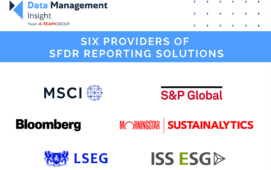Despite the compliance deadline of Fundamental Review of the Trading Book (FRTB) regulation being pushed back to January 2022, the time to address the data management challenges of the regulation is now. A recent A-Team Group Webinar explored the key data challenges presented by the regulation, identified possible solutions, and discussed best practices for implementation.
The Basel Committee’s Standards for Minimal Capital Requirements for Market Risk, also known as FRTB, first published in 2016, aim to address accepted weaknesses in the regulatory capital framework as it relates to firms trading books. The final part of the Basel III suite of rules, and effectively the last piece of major post-financial crisis regulation, the objective of the regulation is to upgrade Basel 2.5 rules to ensure banks have a big enough buffer of capital to protect against the risk they hold, not by inhibiting or reducing trading activity, but by making sure that where risks are taken, there is sufficient capital to support them.
Although the deadline has been pushed back, the amount of work that needs to be undertaken between now and then should not be underestimated – and not all firms have made the strongest start. In a poll of webinar participants, just 14% believe they are making good progress. 36% still remain in the planning stage, while a further 14% have not started at all.
Ignacio Ruiz, founder and CEO of MoCaX Intelligence and former head of counterparty risk analytics at Credit Suisse, warned: “It might seem far away, but there is so much to do that if people don’t start now, it may be too late.”
Looking at the toughest data management challenges of FRTB, Jacob Rank-Broadley, director of regulatory and market structure propositions at Thomson Reuters, said: “Data sourcing and data quality are the two largest challenges for banks.” The choice of whether to using the internal or standardised model approach to satisfy the regulation’s requirements is also challenging. Ruiz said: “Using the internal model approach, the problem is not so much compliance, but the capital penalty, which is outrageous. Because there is a netting effect, it is very easy for the capital calculation to blow up as a result of poor quality data.”
Non-modellable risk factors (NMRFs) present further complexity and are linked to the risk factor eligibility test (RFET). NMRFs require banks to collect real price observations for executed trades or committed quotes on a regular basis. Rank-Broadley commented: “The idea of sourcing this kind of data is fundamentally new, at least from a risk perspective, so it is no small challenge for banks to source a wide enough range of executed trade data and committed quote data to get sufficiently complete results to pass the compliance test.”
Quality of data for NMRFs is one issue, managing it is another. Satinder (Sid) Jandu, director at Viewset and a former FRTB project manager at a Tier 1 bank, said: “This is what has people running for the hills, because this is the most difficult part.”
Another challenge is the P&L attribution test, a fiercely debated topic under FRTB. The test assesses the difference between the P&L calculated by the front office and the P&L calculated by risk. A gap should in theory indicate a breach, but effectively calculating that gap could be immensely expensive. “If you don’t nail down the technology now, it is going to be really costly in the future. Think about it carefully, look for new technologies, and invest time in making the right decisions,” said Ruiz.
So, what should firms be doing to prepare for FRTB implementation? First, engage a risk liaison team to help you interpret the regulations. Second, decide who is running the programme, make sure you engage the front office properly, and remember that not all solutions are IT. Ruiz said: “You cannot do this in isolation. You have to engage with other teams – with risk, with the front office, with finance – and the sooner you do this, the better. Delivering in phases is also really important. FRTB is a humongous programme and it touches nearly everything in the bank. If you don’t set up tangible phases with achievable targets that can be delivered in reasonable timeframes, it is very easy to get lost in the jungle.”
Right now, industry sentiment appears pretty pessimistic. In the final poll of the webinar, 89% of participants suggested FRTB will result in the withdrawal of some products, while 78% think it will mean higher costs of trading and 44% expect the closure of some trading desks. Some final advice from Rank-Broadley: “Start early, don’t underestimate how much time a proper FRTB evaluation will take.”
Subscribe to our newsletter




